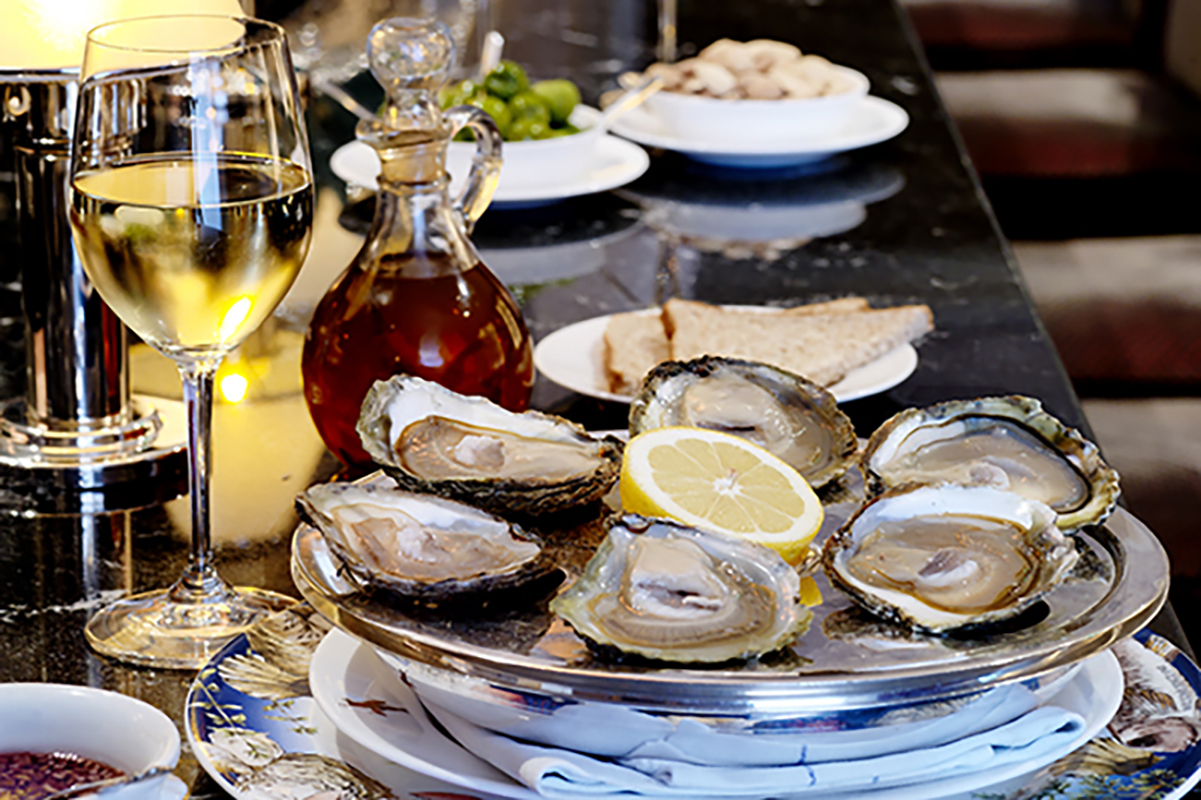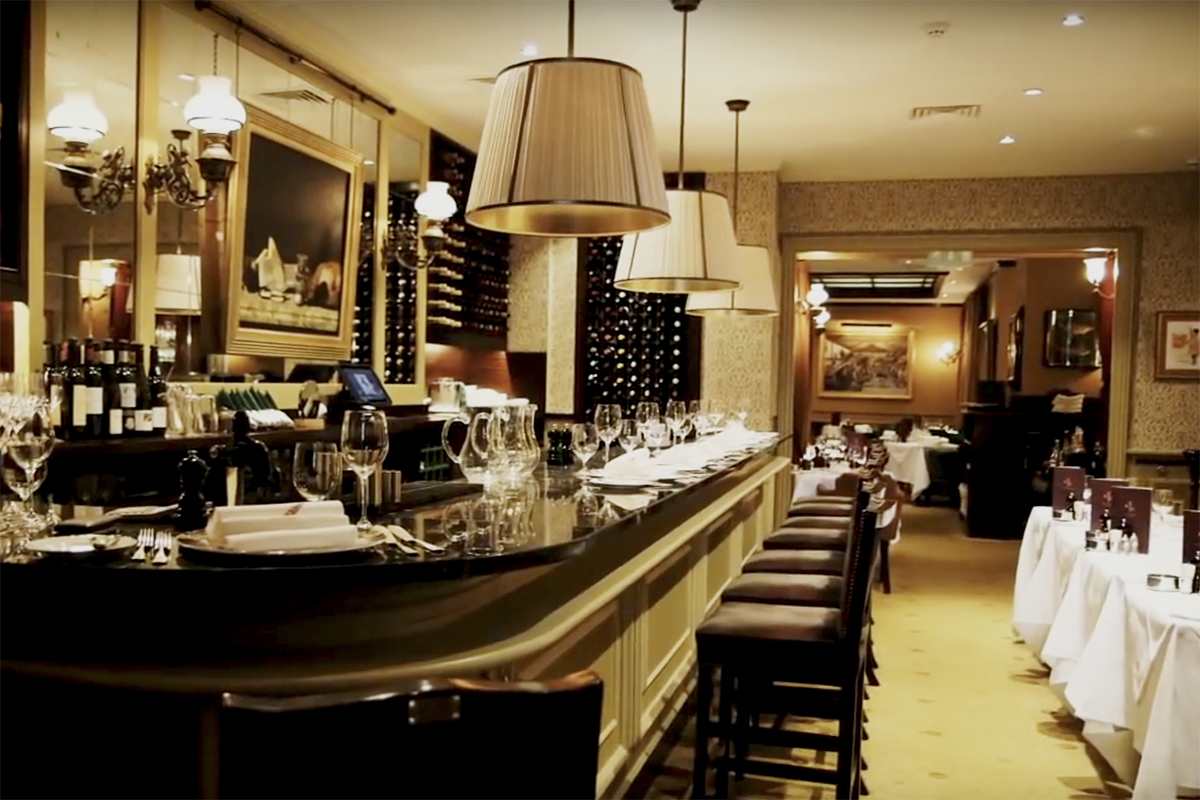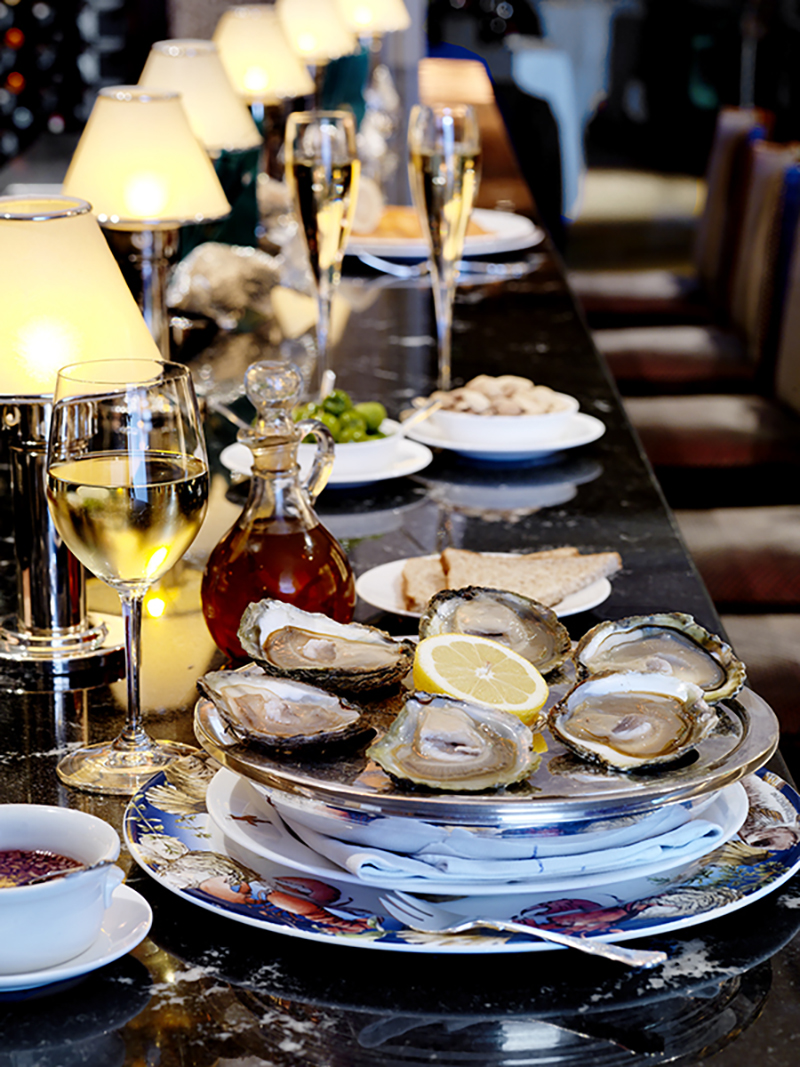This website uses cookies so that we can provide you with the best user experience possible. Cookie information is stored in your browser and performs functions such as recognising you when you return to our website and helping our team to understand which sections of the website you find most interesting and useful.
Tempus taste-tests Wilton’s restaurant’s indulgent new Oyster Master Class
By Michelle Johnson | 6 October 2017 | Food & Drink
Celebrating 275 years of serving up oysters, does Wilton’s new master class shuck the trends?

In the heart of London’s St James’s, Wilton’s has been serving up British seafood classics to its elegant patrons for 275 years. The restaurant was founded by George William Wilton, who delivered fresh oysters to Haymarket regulars, and though its location and ownership has changed minutely over the years its reputation has grown steadily, earning six royal warrants – it’s first as Purveyor of Oysters to Queen Victoria in 1868 – in its time.
Now, to celebrate its 275th anniversary, Wilton’s has launched a 90-minute Oyster Master Class that aims to share its famed Oyster Bar’s years of knowledge with patrons both old and new. Guided by assistant manager Tommaso Sicuro, the class shows guests how to prepare, partner and – most importantly – eat these under-the-sea treats. As an oyster novice myself, it’s the perfect opportunity to try these delicacies in their various forms.
I begin by taking a seat at Wilton’s oyster bar, where European shucking champion Fillipo Salamone is already preparing our group’s first set of oysters. We are greeted with a welcome glass of Wilton’s 275th anniversary Special Cuvée as Sicuro shares the restaurant’s colourful history and debunks a few of the more common myths (no, oysters won’t improve the libido – but they are an incredible source of energising zinc).
Our first set of oysters – six raw natural oysters from around the UK and Ireland, each freshly shucked by Salamone – are placed in front of us with soda bread and a slice of lemon, and a pairing of Wilton’s anniversary Chablis – a dry, earthy wine with grapes grown by the sea. As with wine tasting, we are instructed to take in the scent of the oyster, then sip the natural liquor before sampling the meat, before noting our thoughts down on a card provided by the restaurant.
We start with a light and briny Jersey Rock and the meatier Maldon Rock, getting a sense of the most popular oysters served in the restaurant – and indeed, around the UK. The Carlingford Rock from Ireland has a distinctly creamier taste and stronger scent (for this, I cut through the texture with a bit of lemon), while the Poole Harbour Brownsea Island Native we try next is much sweeter and chewier. The contrast is intense, and although the Poole oyster is one of the favourites of the group, I am unpleasantly overwhelmed by its sweetness and texture.
The next is the most controversial – the West Mersea Island Native. Around six-years-old and natural to the Essex waters in which it is grown, this strong-flavoured briny oyster is considered better loved by men more than women. Yet it is by far my favourite of the raw oysters, with a meaty texture and nutty flavour that I find very easy to eat. Last but not least, the Loch Ryan Native – a Scottish oyster with a bitter tang and strong flavour of zinc.
We take a moment to compare notes before moving on to chef Daniel Kent’s collection of cooked oysters. First, the accompaniments – we swap the Chablis for a glass of Sancerre Jean Paul-Balland from Loire Valley, with a light fruit and citrus taste that better suits the prepared seafood. Chef Kent has prepared another six oysters, a mixture of Wilton’s classic menu and a few dressings that are exclusive to the event.
We start with the Beau Brummell, named for the 18th century dandy (a statue of whom stands a few meters outside the Jermyn Street restaurant) who preferred his oysters in this style. Coated in a light chilli sauce and fried in breadcrumbs, the Beau Brummell is what fried scampi aspires to be. Absolutely delicious as a snack or starter.

This is quickly followed by the first of Chef Kent’s unique offerings – the Bullshot oyster – which has a strong taste of horseradish that neatly divides our party. Luckily his sweet chilli Thai-style oyster comes next and is universally loved by the group, combining my favourite style of cuisine with a delicate Jersey Rock. An instant winner.
The Classic Dressed Oyster, served with spring onions and vinegar is, I imagine, a great introduction to oysters if the raw form is a barrier to your enjoyment, while another classic – oysters dressed with champagne jelly and caviar – is a more refined and experienced texture. Finally, we sample Wilton’s most indulgent and popular cooked oyster, the Oyster Christian Dior, which combines sherry, white wine, cream and truffle for an intensely rich and elegant taste.
With our oysters devoured and rated, Sicuro invites us behind the bar for an attempt at shucking our own final Jersey Rock while explaining how best to preserve oysters at home: never wash them, keep in the fridge with a wet cloth or towel draped on the top, keep on ice for no more than two hours and, most importantly, eat them as soon as they are opened.
After my intensive lesson in the range of flavours, textures and versatility on offer, I can honestly say its advice that I’m looking forward to taking – especially if I can convinced Chef Kent to share a few of his unique recipes.








